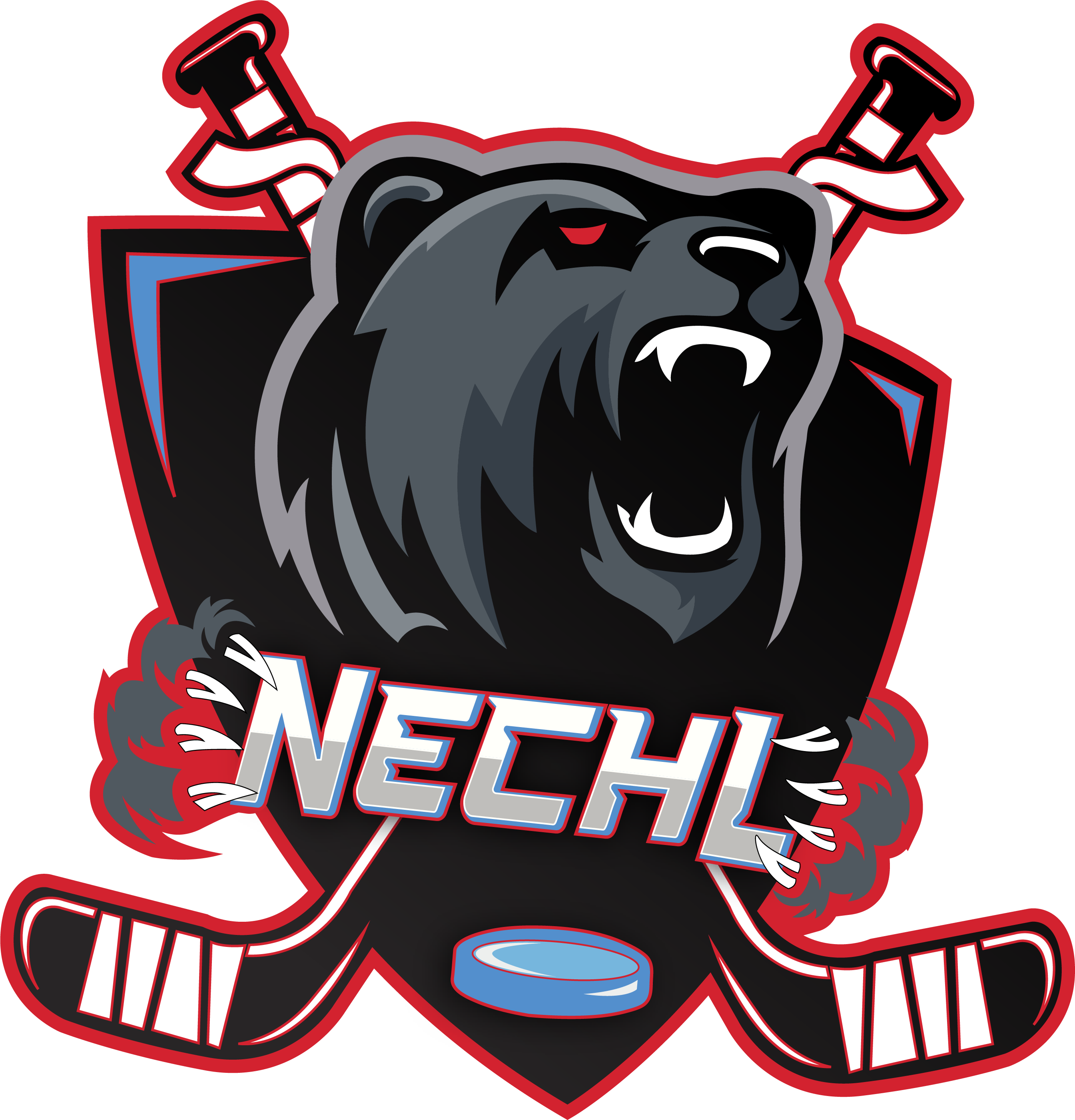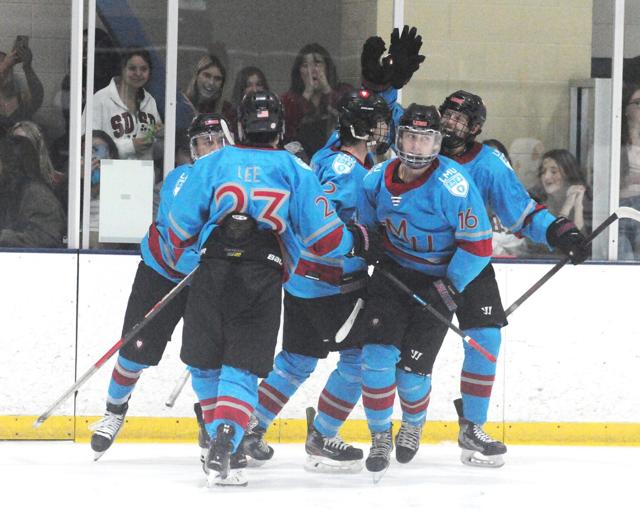From The Los Angeles Loyolan
By Catherine Galanti
Ice hockey has a long — and complicated — history at LMU. The team was initially formed nearly a century ago in 1930, as an initiative headed by Tom Lieb, the head coach of then-Loyola University’s football team, to further the conditioning efforts of the largely Minnesotan football roster. After Lieb was let go in 1939, as a result of failure to produce results, hockey went on without him for a few seasons, then went dormant for decades in after playing their seemingly last game in 1942. In 1994 — a whole 52 years later — the team briefly resurfaced and played two seasons in the mid-nineties as a result of student-driven efforts to revitalize the program, and in 2006, the team was reestablished for good. Now, a new era is dawning for the team.
Change and resilience have always been part of the team’s DNA. Over the past few years, maybe more than ever before, that change has seemed consistently positive. In 2022, the team had a banner year, becoming the champions of the West Coast Hockey Conference (WCHC), and winning a game in the American Collegiate Hockey Association’s (ACHA) regional tournament for the first time in program history. Where do you go from there? Only up.
A few months ago, it was announced that former Head Coach Jack Hyman was leaving the program to pursue coaching opportunities elsewhere. A new head coach is already a significant update, but in addition, the team shared that they’d be adding a full second team to the program.
LMU Club Hockey competes in the ACHA, a governing body for club hockey, similar to how the National Collegiate Athletic Association (NCAA) oversees varsity sports. Some universities do sponsor ice hockey teams through the NCAA, but for universities who don’t have varsity teams, playing in the ACHA is an opportunity to compete at a high level. Similarly, there are divisions in ACHA that denote general skill levels and comparative strength of each hockey program around the country. It’s understood that many of the top ACHA programs are roughly equivalent to Division III NCAA teams.
LMU’s existing team plays in ACHA Division 2 (D2), while the newly established team joins Division 3 (D3). Daniel Kim takes over as the Division 2 head coach, and Trevor Wada takes the helm as the first-ever Division 3 head coach.
Kim and Wada bring a solid joint coaching history to the program; the two of them coached the South Bay Stingrays, a regional high school team, for four years together before coming to LMU. Coach Kim also coached for the Junior Kings, the club affiliate of the Los Angeles Kings. In addition, Christopher Rhodes and Kevin Snow return as assistant coaches from the 2022-23 season — and Coach Rhodes worked with both head coaches while with the Stingrays. That history bodes well for a team trying to capitalize on their recent record of success.
“We get along well. We don’t have any issues, we communicate well amongst each other and we make sure that everything is taken care of,” said Head Coach Kim. “If we have conflicts for the college team or the high school team, we all make sure that everything gets covered.”
Doubling the size of the program means more than just adding names to the roster — it means adjusting to a new coaching regime, planning logistics and developing team chemistry on a larger scale.
Between the two teams, there are now about 40 players associated with the program. Although that number sounds overwhelming, maintaining the well-known culture of camaraderie has remained paramount. During training camp before the season started, both teams worked together in practices and drills and spent a lot of time bonding off the ice as well.
“It kind of got everyone together, the guys that are going to be [Division 3] or [Division 2] — and there’s a lot of guys who didn’t know if they were going to be up to D2 or D3,” said Coach Kim. “Just getting them on the ice together … builds camaraderie and just makes it a lot better. We’re all on the same team, right? Regardless if you’re playing D2 or D3, we’re all in it together.”
“Everyone’s really open and really willing to get to know everyone. It obviously took a lot of time for me to get everyone’s names down, but we’ve hung out off-campus so many times, and done so many things outside of hockey to the point where I see them more as friends than teammates at this point,” said Division 2 freshman Jeff Lee. “We don’t have any, I don’t know the word, jerks? We’re all good guys. I think that was a big part of our team being really tight knit. Honestly, we’re only three weeks in and I like where we’re at right now. I think we’ll just get a lot closer as we progress throughout the year.”
Another benefit of having more players is having more depth on the bench — important when trying to return to the playoffs — but also so that the workload is distributed more evenly.
“I’d honestly say that the pressure is lower for each individual kid, just because now we have a solid four lines, [whereas] in prior years we may have had two or three lines that we were kind of leaning on, and the pressure is kind of more on them,” said senior forward Spencer Engstrom, captain of the D2 team. “This year it’s on everybody. I’d say that our starting line won’t have to produce as much as they used to, even though we’d still like them to. Points will be distributed across the board, where if [the first line] isn’t having such a hot day, I think our fourth line can go out there and still prove something.”
The new changes mean that the program is experiencing some adjustment logistically as well.
“[The D3 team] is in a whole other conference. They have different bus schedules,” said Engstrom. On some trips, both teams are playing in the same place, which creates added scheduling logistics in itself. But in most cases, each team is playing separately — in different rinks, against different opponents, and even in different cities or states.
“There are way more hotel rooms. They need jerseys. If somebody gets hurt on that team, the trainers [need to be coordinated]. Everything that is added, you need to double it on the back end that [fans] don’t see as well,” stated Engstrom.
The already-strong team chemistry has been crucial to easing the transition to college for the freshmen, and returning players and team leaders have stepped up, regardless of whether they have a “C” — for captain — on their jersey or not.
“It’s always scary to go into college not knowing anybody, so going in knowing you’re going to have 40 friends off the bat, I think that was a really big part [of why I chose LMU] … I think our older guys did a really good job keeping that culture of having the younger guys get involved,” said Lee. “You always have someone to look up to. [The returning players] always give good tips. Yesterday, two of the older guys were giving me tips on how to control my hockey schedule and my school schedule, which is something I’ve been struggling on. It’s stuff like that, always having someone to look up to. Not even one ‘someone’, like 30 guys to look up to, right? They’re always willing to sit down and just talk to you.”
That culture is what drew Lee to the team, as well as many of his teammates. Through all the recent change, it’s good to know at least one thing will stay consistent.
“I did know a couple guys who graduated in the past and in talking to them, they convinced me to come out here. They talked about how much there was the aspect of [the team] being really competitive and it being a really big part of their lives,” said Lee. “But even outside of hockey, all the guys hanging out, just us having a house, somewhere we could all go to, like a safe haven, [all contributes to the team bonding]. It’s a mix of the on-ice and off-ice. We have a team, but beyond that, we’re all brothers too.”
The D2 team plays their home opener on Friday, Sept. 22, at the Toyota Sports Center in El Segundo, California. The team has arranged fan buses from campus, and puck drop is at 6:30 p.m.
(Originally published at https://www.laloyolan.com/sports/new-coaches-and-a-second-team-equal-new-beginning-for-lmu-club-hockey/article_c4e1b7a9-17ca-55cb-891d-8cc05bf9c7b7.html)
































